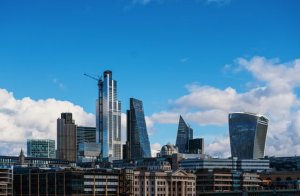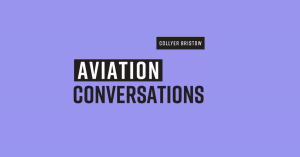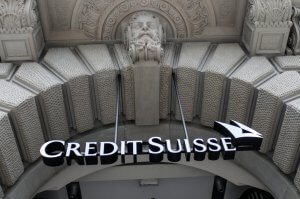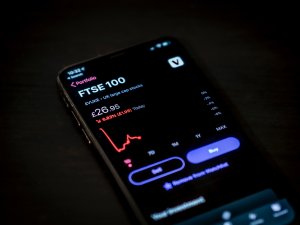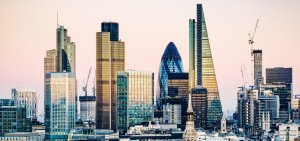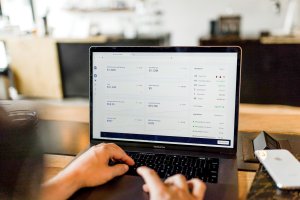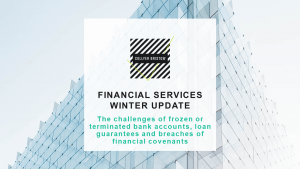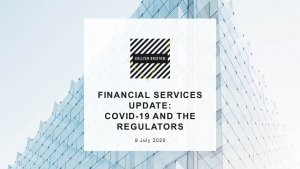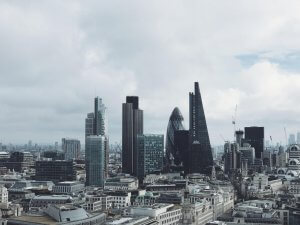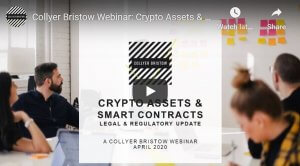- Banking & financial disputes

Longer Reads
‘Last Look’ in Forex Markets
4 minute read
Published 15 September 2017
Key information
- Specialisms
- Dispute Resolution
- Services
- Banking & financial disputes
With further litigation in prospect against banks over ‘Last Look’ in the FX markets, Robin Henry, a Partner in Collyer Bristow’s Banking and Finance Disputes Group, considers some of the issues. The practice has been under scrutiny from international regulators for some time and banks will now be required by the new FX Global Code of Conduct[1] to be more transparent in their practices. However, previous abuse of ‘Last Look’ has resulted in lawsuits against banks and it is likely that further legal claims will be brought by major trading counterparties and investors who have suffered serious losses.
Last Look
Last Look is operated by many banks acting as prime brokers and market makers in the FX market. When banks receive and agree FX trade orders, instead of executing those orders as soon as possible, they may hold back and give them a ‘last look’ to see whether or not they are profitable for the bank. If they are not profitable, the bank may reject the orders.
The practice arose partly because of the impact of high-frequency trading which aims to exploit tiny delays in the execution of orders. These delays may only be a matter of milliseconds but by the time it takes a bank to execute an order it has received, the price it agreed may already be out of date, allowing the high-frequency traders to reap the benefit.
However, banks don’t just trade with high-frequency traders. They also trade on their own account with major ‘buy-side’ counterparties such as pension funds and asset managers or act as prime brokers for other traders. The risk to the banks from quoting over-generous prices is exacerbated because there is no centralised exchange for processing FX orders. Trades are carried out ‘over the counter’ between individual counterparties. That gives rise to greater counterparty risk which in turn means that larger trading institutions are reluctant to trade with smaller counterparties. Banks can fill this gap by using their greater resources to trade directly with the largest counterparties as prime brokers on behalf of buy-side clients, and this increases the overall liquidity of the market. However, as there is no overall exchange structure, a price quoted by a bank acting as a liquidity provider can be widely distributed among numerous brokerages and trading platforms. The resulting risk to banks of greater losses across the market only increased their desire to embed Last Look into their operations.
To defend themselves against the risk of agreeing to unprofitable orders, the banks developed systems which put an automatic hold period between the receipt of an order and its execution. If the price had moved against the bank during this period, it would be able to reject the trade. The bank’s buy-side clients would, however, usually be unaware of the real reason for the rejections and they would be likely to suffer losses, as they may have missed out on profitable trades.
The only way in which traders may be able to avoid Last Look execution is if they trade with other traders directly on Electronic Communication Networks (‘ECNs’). However, even then, major banks still act as counterparties in most FX trades executed on ECNs and since ECNs require the liquidity provided by banks to facilitate sufficient trading to survive, banks often insist that ECNs permit them to use Last Look when trading on those platforms.
Banks have claimed that Last Look is a legitimate business practice which is necessary to protect themselves against the operations of high-frequency traders. They say the alternative would be to widen their spreads (the difference between their selling and buying prices), which might make the banks’ rates uncompetitive with other traders. That might also raise the overall cost of trading because of the role the banks play in providing greater liquidity to the market. The banks’ contention is that Last Look allows them to tighten their spreads which benefits the market as a whole. However, that does not help those individual traders who had their trades rejected and suffered loss as a result.
Regulatory action
The practice became widely discredited when the New York Department of Financial Services (‘NYDFS’) imposed a $150m penalty on Barclays in 2015 for using its automated FX trading system to reject client orders that would have been unprofitable for the bank. The regulator made a distinction between the acceptable practice of using Last Look to defend itself against “toxic orders” received from high-frequency traders and the abusive practice of making unjustified profits at the expense of clients. The NYDFS said that Barclays did not seek to distinguish toxic orders from instances in which prices merely happened to move in favour of the customer and against Barclays after the customer’s order was received. Instead, Barclays applied Last Look to all its FX trades. No analysis was performed to ensure it was only used to reject toxic trades but applied it entirely by reference to its profit or loss. So “instead of employing Last Look as a purely defensive measure, Barclays used it as a general filter to reject customer orders that Barclays predicted, based on price movements during the hold period, would be unprofitable to the bank”[2].
Moreover, Barclays did not inform its counterparties of the practice. It simply said that the trades were ‘not acknowledged’ and, when asked why trades had not been fulfilled by customers, there was evidence that the bank had blamed technical problems rather than business decisions for the rejections.
Lawsuits
Since the NYDFS fined Barclays, a number of class action lawsuits have been commenced in the US. First, Axiom issued proceedings against Barclays, claiming that its Last Look practices caused its trading partners to suffer ‘significant damages’. Axiom claimed that they were ‘unfairly deceived’ because of Last Look and that Barclays was ‘unjustly enriched’ at Axiom’s expense. Barclays has now agreed to pay $50 million in settlement to all traders affected between 2008 and 2016 and future settlements concerning other banks relating to Last Look are reported to be in the region of $1 billion in the US alone.
A further action has been brought by Alpari (US) which claimed that from 2004 to 2016, Citigroup used Last Look to reject millions of trades that would otherwise have been executed but for Citigroup reneging on its matched orders. The claims are that following receipt of an order either on a Citigroup proprietary platform or a third party ECN which was matched to Citigroup’s offered price, Citigroup had programmed an unnecessary delay of up to several seconds into its execution algorithms which allowed it to reject orders which were then subsequently filled at a price less favourable than the original Citigroup price to which it was matched.
In addition, Alpari has filed further lawsuits against five other major banks (RBS, Goldman Sachs, Credit Suisse, Morgan Stanley and BNP Paribas). All are alleged to have caused damage to Alpari and other FX market participants due to Last Look. The claims are for breach of contract on their proprietary trading platforms, breach of contract on ECNs as well as unjust enrichment.
Code of conduct
In the UK, although the financial regulators have not fined any banks in relation to Last Look, the new Global FX Code of Conduct, which came into force in May 2017, does require market participants to be transparent about the practice, although it has not been banned outright. Nevertheless, that still leaves continuing questions over the damage which has been caused by bad practice in the past and the prospect that banks will face further lawsuits from the buy-side including traders, hedge funds, pension funds and brokers.
Related content
Associated sectors / services
Authors
With further litigation in prospect against banks over ‘Last Look’ in the FX markets, Robin Henry, a Partner in Collyer Bristow’s Banking and Finance Disputes Group, considers some of the issues. The practice has been under scrutiny from international regulators for some time and banks will now be required by the new FX Global Code of Conduct[1] to be more transparent in their practices. However, previous abuse of ‘Last Look’ has resulted in lawsuits against banks and it is likely that further legal claims will be brought by major trading counterparties and investors who have suffered serious losses.
Last Look
Last Look is operated by many banks acting as prime brokers and market makers in the FX market. When banks receive and agree FX trade orders, instead of executing those orders as soon as possible, they may hold back and give them a ‘last look’ to see whether or not they are profitable for the bank. If they are not profitable, the bank may reject the orders.
The practice arose partly because of the impact of high-frequency trading which aims to exploit tiny delays in the execution of orders. These delays may only be a matter of milliseconds but by the time it takes a bank to execute an order it has received, the price it agreed may already be out of date, allowing the high-frequency traders to reap the benefit.
However, banks don’t just trade with high-frequency traders. They also trade on their own account with major ‘buy-side’ counterparties such as pension funds and asset managers or act as prime brokers for other traders. The risk to the banks from quoting over-generous prices is exacerbated because there is no centralised exchange for processing FX orders. Trades are carried out ‘over the counter’ between individual counterparties. That gives rise to greater counterparty risk which in turn means that larger trading institutions are reluctant to trade with smaller counterparties. Banks can fill this gap by using their greater resources to trade directly with the largest counterparties as prime brokers on behalf of buy-side clients, and this increases the overall liquidity of the market. However, as there is no overall exchange structure, a price quoted by a bank acting as a liquidity provider can be widely distributed among numerous brokerages and trading platforms. The resulting risk to banks of greater losses across the market only increased their desire to embed Last Look into their operations.
To defend themselves against the risk of agreeing to unprofitable orders, the banks developed systems which put an automatic hold period between the receipt of an order and its execution. If the price had moved against the bank during this period, it would be able to reject the trade. The bank’s buy-side clients would, however, usually be unaware of the real reason for the rejections and they would be likely to suffer losses, as they may have missed out on profitable trades.
The only way in which traders may be able to avoid Last Look execution is if they trade with other traders directly on Electronic Communication Networks (‘ECNs’). However, even then, major banks still act as counterparties in most FX trades executed on ECNs and since ECNs require the liquidity provided by banks to facilitate sufficient trading to survive, banks often insist that ECNs permit them to use Last Look when trading on those platforms.
Banks have claimed that Last Look is a legitimate business practice which is necessary to protect themselves against the operations of high-frequency traders. They say the alternative would be to widen their spreads (the difference between their selling and buying prices), which might make the banks’ rates uncompetitive with other traders. That might also raise the overall cost of trading because of the role the banks play in providing greater liquidity to the market. The banks’ contention is that Last Look allows them to tighten their spreads which benefits the market as a whole. However, that does not help those individual traders who had their trades rejected and suffered loss as a result.
Regulatory action
The practice became widely discredited when the New York Department of Financial Services (‘NYDFS’) imposed a $150m penalty on Barclays in 2015 for using its automated FX trading system to reject client orders that would have been unprofitable for the bank. The regulator made a distinction between the acceptable practice of using Last Look to defend itself against “toxic orders” received from high-frequency traders and the abusive practice of making unjustified profits at the expense of clients. The NYDFS said that Barclays did not seek to distinguish toxic orders from instances in which prices merely happened to move in favour of the customer and against Barclays after the customer’s order was received. Instead, Barclays applied Last Look to all its FX trades. No analysis was performed to ensure it was only used to reject toxic trades but applied it entirely by reference to its profit or loss. So “instead of employing Last Look as a purely defensive measure, Barclays used it as a general filter to reject customer orders that Barclays predicted, based on price movements during the hold period, would be unprofitable to the bank”[2].
Moreover, Barclays did not inform its counterparties of the practice. It simply said that the trades were ‘not acknowledged’ and, when asked why trades had not been fulfilled by customers, there was evidence that the bank had blamed technical problems rather than business decisions for the rejections.
Lawsuits
Since the NYDFS fined Barclays, a number of class action lawsuits have been commenced in the US. First, Axiom issued proceedings against Barclays, claiming that its Last Look practices caused its trading partners to suffer ‘significant damages’. Axiom claimed that they were ‘unfairly deceived’ because of Last Look and that Barclays was ‘unjustly enriched’ at Axiom’s expense. Barclays has now agreed to pay $50 million in settlement to all traders affected between 2008 and 2016 and future settlements concerning other banks relating to Last Look are reported to be in the region of $1 billion in the US alone.
A further action has been brought by Alpari (US) which claimed that from 2004 to 2016, Citigroup used Last Look to reject millions of trades that would otherwise have been executed but for Citigroup reneging on its matched orders. The claims are that following receipt of an order either on a Citigroup proprietary platform or a third party ECN which was matched to Citigroup’s offered price, Citigroup had programmed an unnecessary delay of up to several seconds into its execution algorithms which allowed it to reject orders which were then subsequently filled at a price less favourable than the original Citigroup price to which it was matched.
In addition, Alpari has filed further lawsuits against five other major banks (RBS, Goldman Sachs, Credit Suisse, Morgan Stanley and BNP Paribas). All are alleged to have caused damage to Alpari and other FX market participants due to Last Look. The claims are for breach of contract on their proprietary trading platforms, breach of contract on ECNs as well as unjust enrichment.
Code of conduct
In the UK, although the financial regulators have not fined any banks in relation to Last Look, the new Global FX Code of Conduct, which came into force in May 2017, does require market participants to be transparent about the practice, although it has not been banned outright. Nevertheless, that still leaves continuing questions over the damage which has been caused by bad practice in the past and the prospect that banks will face further lawsuits from the buy-side including traders, hedge funds, pension funds and brokers.
Associated sectors / services
- Banking & financial disputes
Authors
Need some more information? Make an enquiry below.
Subscribe
Please add your details and your areas of interest below
Article contributor
Robin
HenryPartner - Head of Dispute Resolution Services
Specialising in Banking & financial disputes, Commercial disputes, Corporate recovery, restructuring & insolvency, Financial regulatory and Personal insolvency
Enjoy reading our articles? why not subscribe to notifications so you’ll never miss one?
Subscribe to our articlesMessage us on WhatsApp (calling not available)
Please note that Collyer Bristow provides this service during office hours for general information and enquiries only and that no legal or other professional advice will be provided over the WhatsApp platform. Please also note that if you choose to use this platform your personal data is likely to be processed outside the UK and EEA, including in the US. Appropriate legal or other professional opinion should be taken before taking or omitting to take any action in respect of any specific problem. Collyer Bristow LLP accepts no liability for any loss or damage which may arise from reliance on information provided. All information will be deleted immediately upon completion of a conversation.
Close











